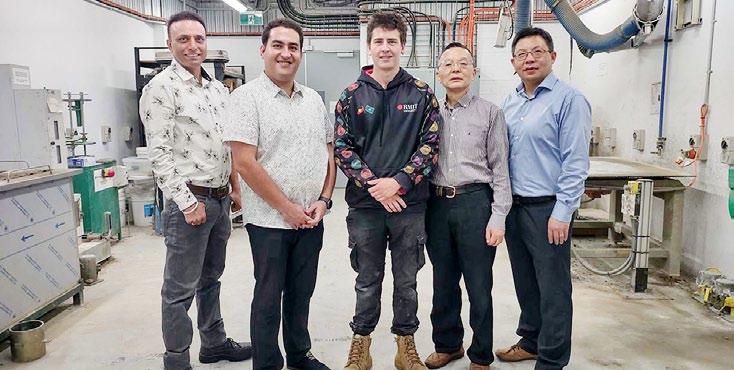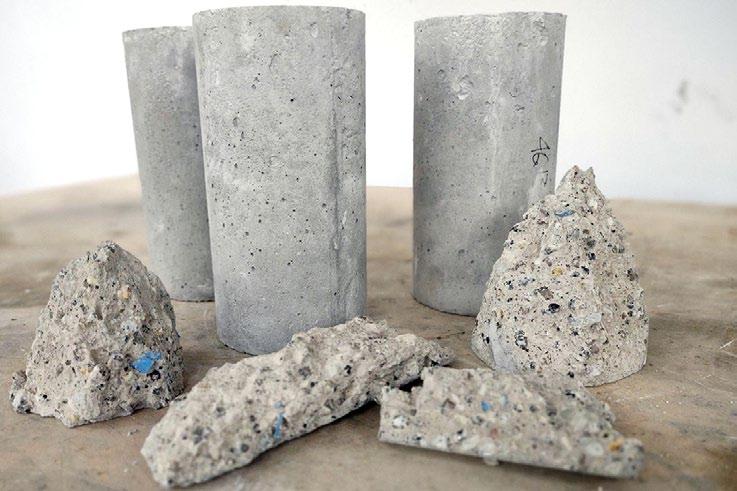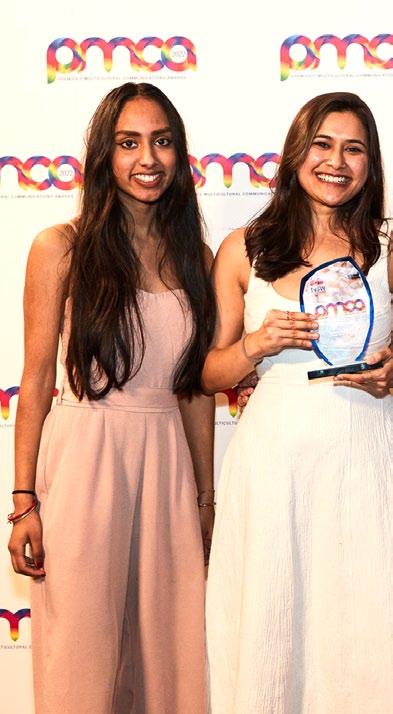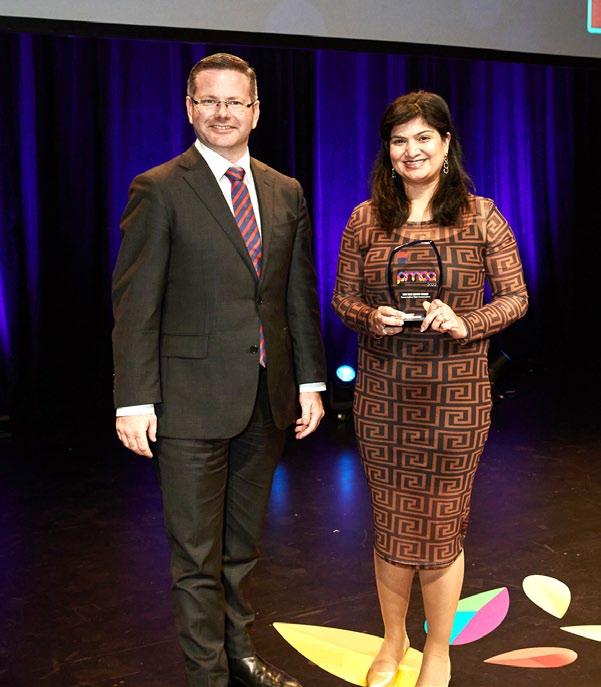
3 minute read
concrete O ID RMIT
from 2022-09 Melbourne
by Indian Link
BY MANU PRAKAASH
An RMIT University research team has made a remarkable breakthrough, helping transform PPE equipment into reinforcement materials for strengthening structural concrete.
It will now make use of some 54,000 tonnes of Personal Protective Equipment (PPE) waste that has been produced per day since the pandemic to instead increase the strength of concrete by up to 22 per cent, as well as improve its resistance to cracking.
Rajeev Roychand, the joint lead author of the research, has called the results “heartening.”
“There has been considerable interest from the industry, healthcare companies, as well as manufacturers of PPE items,” he told Indian Link.
“This is particularly significant due to the high levels of PPE use in the context o I . lso a lot o the items la unused past their expiry date and need to be properly disposed of. Our research has a lot to offer in that scenario as well.
The researchers from RMIT School of Engineering carried out three separate studies on the recycling of PPE, in particular rubber gloves, isolation gowns, and face masks. Their research has provided empirical evidence that these items can be used to increase the compressive strength and elasticity of concrete.
Rubber gloves increased compressive strength by up to 22%.
Isolation gowns increased resistance to bending stress by up to 21%, compressive strength by 15% and elasticity by 12%.
Face masks increased compressive strength by up to 17%
Pursuing a circular economy approach, the researchers have found a solution to the longstanding problem of recycling and disposal of PPE waste.
The project has already got on board with the industry, with the RMIT School of Engineering’s industry partner Casafico Pty Ltdset to utilise this research in some of their projects. They are keen to collaborate with the healthcare and construction industries to further develop the research.
Face masks are another waste item that can be converted to a valuable building resource. Every month, about 129 billion disposable face masks are used and thrown away around the globe. This research could be a massive step towards providing a smart solution for this evergrowing ile o I generated waste, noted first author Shannon ilmartin nch a ice hancellor’s Indigenous Pre-Doctoral Fellow at RMIT. “This challenge will remain even after the pandemic is over,” KilmartinLynch said. “Our research found that incorporating the right amount of shredded PPE could improve the strength and durability of concrete [and provide a viable solution to this issue].” o chand added s such I aside, there is traditionally a huge quantity of PPE materials that end up in landfills. Plastics from the PPE turn into microplastics and end up in oceans, thereby endangering marine life and causing marine pollution. Incinerating them [PPE items] is also not a viable solution. So, if they can be used in concrete, on the lines of what our research has come up with, it will provide a sustainable solution to this serious problem.”
In previous research, Shannon Kilmartin-Lynch had successfully re ur osed I single use ace masks to create road-building material that met civil engineering safety standards. Using this material to build just one kilometre of a two-lane road uses up 3 million face masks, preventing 93 tonnes of waste from going to landfill.

For Roychand, who moved to Australia from Amritsar, this research is the ideal avenue for his particular passion - finding engineering-driven solutions to some of the most pressing challenges of the 21st century.
The team are currently looking for additional funding to come through, so the research effort can be e anded.
“My colleagues and I are busy trying to find more industry partners for the adoption of this discovery and towards continuing teaching the next generation about concrete structures and building sustainability into the science of construction,” Roychand concluded.
BY IQRA SAEED
Indian Link Media Group has taken out two awards at this year’s NSW Premier’s Multicultural Communications Awards (PMCAs).




Pawan Luthra and Rajni Anand Luthra’s report of a nationwide survey of voting intention within the Indian community in the lead up to this year’s Federal Election, brought home the award for Best Text Report.



Youth writer Rhea L Nath was awarded Young Journalist of the Year.
The media group was also nominated in the categories o est udio e ort or its I information including the Bollywood parody Jab Song which went viral last year), and the Alan Knight Student Award for yours truly.
Indian Link’s election surveys are typically eagerly awaited, but this time round the largescale exercise garnered particular attention. It




All smiles: Indian Link team (from left) Iqra Saeed, Rhea L Nath, CharuVij, gathered data on issues of concern impacting us as part of the wider mainstream, but also included issues specific to the community such as the effect o tra el bans during the pandemic, and whether Scott Morrison’s frequent ‘curry night’ posts on social media influenced voting decision in any way.
Findings broke the community barrier and were discussed on national broadcaster ABC’s Radio National, ABC Radio Sydney’s Drive show ’s The Drum (where host Julia Baird held up a copy for audiences to see) and was shared by The Guardian in their live daily election coverage.



Co-authors Pawan Luthra and Rajni Anand Luthra were not at the event to receive the award themselves, but Pawan said later, “I’m quite proud of the work we did these elections. As part of our entire election coverage spanning three months, this particular piece informed as well as mobilised public opinion, both within our own community and those watching us from the outside. I’m grateful that its
Dead Heat













